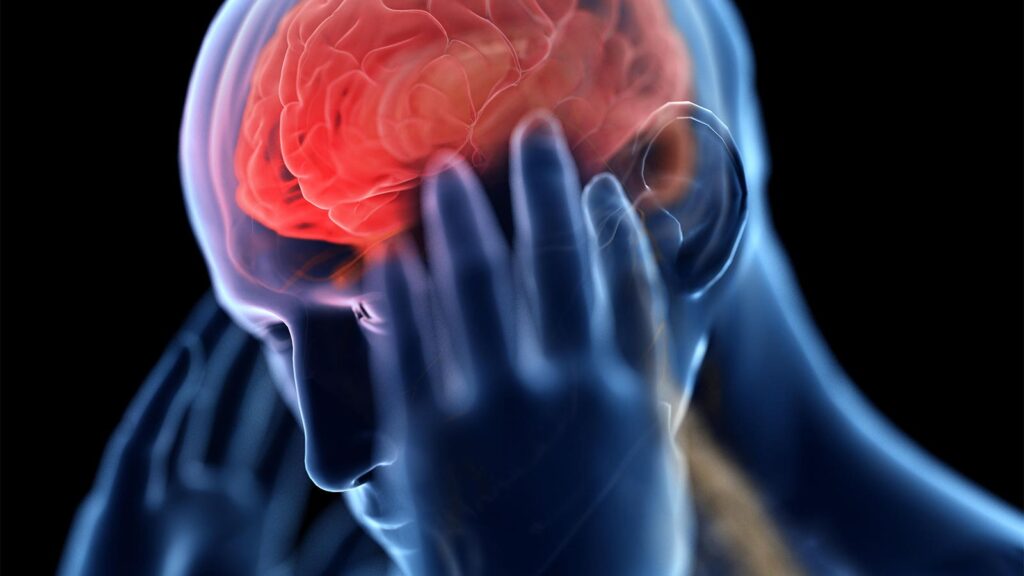The American College of Physicians (ACP) issued a clinical guideline for episodic migraine prevention that varied from what migraine experts recommend.
The ACP guideline, published in Annals of Internal Medicine, includes three recommendations centered around monotherapy:
- Recommendation 1 suggests clinicians start monotherapy to prevent episodic migraine headache in nonpregnant adults in outpatient settings by choosing a beta-adrenergic blocker, either metoprolol or propranolol; the antiseizure medication valproate; the serotonin and norepinephrine reuptake inhibitor venlafaxine; or the tricyclic antidepressant amitriptyline.
- Recommendation 2 states that if patients don’t tolerate or don’t adequately respond to these treatments, clinicians should use monotherapy with a calcitonin gene-related peptide (CGRP) antagonist like atogepant (Qulipta) or rimegepant (Nurtec), or a CGRP monoclonal antibody like erenumab (Aimovig), eptinezumab (Vyepti), fremanezumab (Ajovy), or galcanezumab (Emgality).
- Recommendation 3 indicates if patients do not tolerate or inadequately respond to the treatments suggested in recommendations 1 and 2, clinicians should use monotherapy with the antiseizure medication topiramate.
“All three ACP recommendations have conditional strength and low-certainty evidence,” wrote Amir Qaseem, MD, PhD, MHA, of the ACP, and guideline co-authors. “Clinical considerations provide additional context for physicians and other clinicians.”
To develop these recommendations, the guideline committee relied on a comparative effectiveness review that evaluated migraine frequency and duration, the number of days medication was taken to treat acute migraine, the frequency of migraine-related emergency room visits, migraine-related disability, quality of life and physical function, and treatment discontinuation due to adverse events. They identified additional data about adverse events through medication labels and other studies.
The committee also used cost and information about patient preferences as primary factors to prioritize different migraine prevention treatments.
“There is no difference when comparing benefits and harms of all the treatments recommended for prevention of episodic migraine,” Qaseem said. “Given the lack of differences in net benefit, ACP considered evidence of patients’ values and preferences and economic evidence.”
The committee found no clinically important advantages for CGRP-targeting agents. “CGRPs were substantially higher in costs and are currently unavailable as generics,” Qaseem told MedPage Today. “Expensive medications have an impact on our patients. As a result, medications that are administered orally and lower cost were prioritized since there are no differences in net benefit.”
The ACP recommendations are at odds with those from the American Headache Society, the Canadian Headache Society, the European Headache Foundation, and others, said neurologist Andrew Charles, MD, of the David Geffen School of Medicine at the University of California Los Angeles.
“Some elements of the guideline are remarkably misinformed and naive, perhaps reflecting the fact that most of the authors do not have any demonstrable experience with or expertise in headache medicine,” Charles told MedPage Today.
“One striking example is their recommendation for the use of valproate as a first-line therapy despite grave tolerability and safety issues associated with this medication, particularly in women of childbearing age,” he continued. “The published guidelines and position statements of the headache societies and foundations are far more thoughtful, sensible, reliable, and trustworthy.”
Valproate is a known teratogen; its label carries a boxed warning that prenatal exposure may lead to cognitive deficits or physical birth defects. The drug is contraindicated for migraine prevention in pregnant women (the ACP guideline applies to nonpregnant women). The FDA has stated that all nonpregnant women of childbearing age taking valproate products should use effective birth control, and the World Health Organization has said valproate should not be prescribed to women of childbearing potential.
The ACP guideline also differs from the American Headache Society’s position on CGRP inhibitors, which says these drugs should be considered a first-line option for migraine prevention.
“CGRP-targeting therapies were developed specifically for migraine based on a solid foundation of evidence, in contrast to the other first-line therapies,” Charles said. The American Headache Society “considered the totality of evidence including primary and secondary endpoints of randomized clinical trials, as well as ‘real-world’ evidence including adherence to medications,” he pointed out.
“We recognize that patient adherence to the traditional first-line therapies is remarkably poor, due both to lack of efficacy and poor tolerability,” Charles added. “While we acknowledge cost of the medication as a factor, we also evaluate other individual and societal costs that result from inadequate or poorly-tolerated treatment of migraine.”
The ACP guideline emphasizes that patient adherence to migraine prevention drugs is important because improvement may occur gradually after starting a long-term treatment option.
“Migraine is underdiagnosed and undertreated,” Qaseem noted. Clinicians should talk to their patients and use an informed decision-making approach, he advised.
-
Judy George covers neurology and neuroscience news for MedPage Today, writing about brain aging, Alzheimer’s, dementia, MS, rare diseases, epilepsy, autism, headache, stroke, Parkinson’s, ALS, concussion, CTE, sleep, pain, and more. Follow
Disclosures
The comparative effectiveness review was funded by the American College of Physicians (ACP).
Qaseem is an employee of ACP; he reported no competing interests. Co-authors had relationships with nonprofit groups and pharmaceutical companies.
Charles disclosed relationships with pharmaceutical companies and royalties from Oxford University Press.
Primary Source
Annals of Internal Medicine
Source Reference: Qaseem A, et al “Prevention of episodic migraine headache using pharmacologic treatments in outpatient settings: a clinical guideline from the American College of Physicians” Ann Intern Med 2025; DOI: 10.7326/ANNALS-24-01052.
Secondary Source
Annals of Internal Medicine
Source Reference: Damen JAA, et al “Comparative effectiveness of pharmacologic treatments for the prevention of episodic migraine headache: a systematic review and network meta-analysis for the American College of Physicians” Ann Intern Med 2025; DOI: 10.7326/ANNALS-24-00315.
Please enable JavaScript to view the

